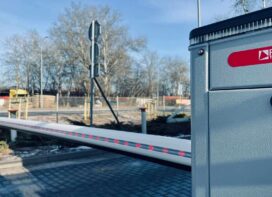 Zym-TecTM from Innovation Technology Enzyme Company of India Pvt Ltd (i-Tec-India) is a highly concentrated, non-toxic liquid bio-enzymatic soil stabiliser that is used in the construction of roads.
Zym-TecTM from Innovation Technology Enzyme Company of India Pvt Ltd (i-Tec-India) is a highly concentrated, non-toxic liquid bio-enzymatic soil stabiliser that is used in the construction of roads.
Addition of Zym-Tec to local soil transforms the soil into a raw material which can be used as a base for all-weather roads. This yields significant savings in transportation and other costs, time and materials and reduces carbon footprint. The Zym-Tec solution enables recycling of waste materials such as fly ash, quarry waste products, mine wastes and building waste materials for use in road construction. Zym-Tec has many advantages over conventional additives and solutions for road construction such as gravel and well grounded soil which are becoming increasingly expensive and are significantly more polluting. The application of Zym-Tec does not require any significant specialised machinery or construction procedures. The use of Zym-Tec also enables the use of a unique road rehabilitation solution which effectively reuses 100% of the existing materials by scraping off the asphalt and top aggregate layers, grinding all the materials together, mixing in the Zym-Tec solution, relaying the resulting aggregate mix, and compacting.
In construction of rural roads such as dirt roads and gravel roads, the addition of Zym-Tec neutralises the negative effects of clay content in the soil and helps achieve greater densities with the same base material. This increased density in turn reduces dust by lowering loss of material on the surface of the road, improves the road surface’s load bearing capacity and enables it to offer greater resistance to abrasion. A road surface treated with Zym-Tec does not present problems such as mud accumulation and other problems during monsoons because it does not absorb water. With paved roads, the addition of Zym-Tec leads to a higher load-bearing capacity by again making the sub-grade resistant to water absorption which can cause expansion/contraction cycles, thus weakening the layer.
 TrafficInfraTech Magazine Linking People Places & Progress
TrafficInfraTech Magazine Linking People Places & Progress


